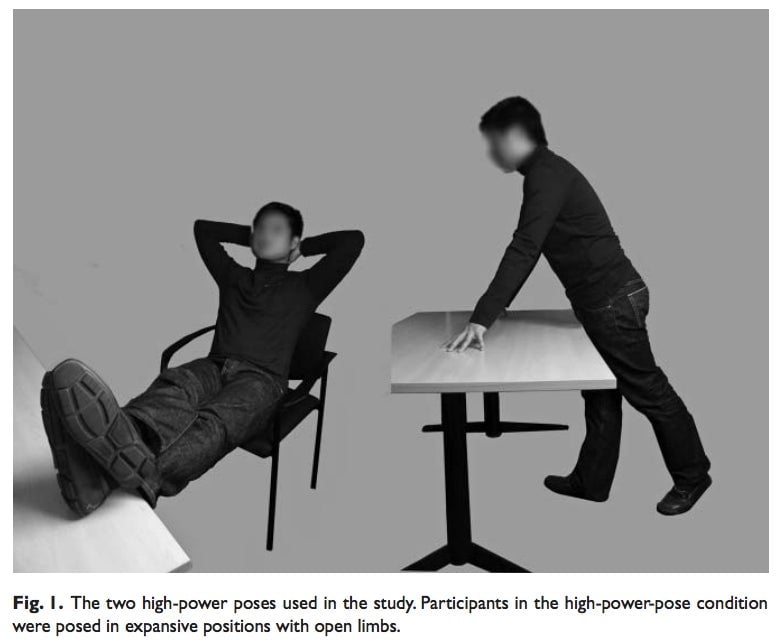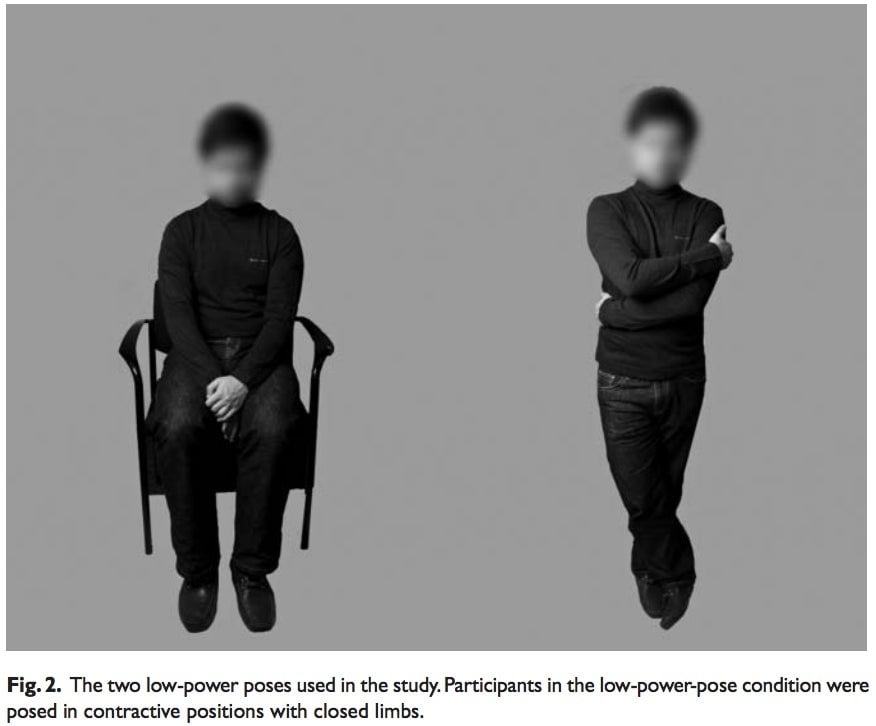The complete guide to getting what you want with body language
If conference calls and even Skype conversations never feel quite the same as sitting in a room with someone, it’s because we communicate a vast amount of extra information with every part of our bodies, from the arch of our eyebrows to the movements of our feet. Researchers have devoted a lot of time to studying body language, and Quartz turned to some academic papers to compile these explanations about the impact of various body positions.


If conference calls and even Skype conversations never feel quite the same as sitting in a room with someone, it’s because we communicate a vast amount of extra information with every part of our bodies, from the arch of our eyebrows to the movements of our feet. Researchers have devoted a lot of time to studying body language, and Quartz turned to some academic papers to compile these explanations about the impact of various body positions.
1. While expansive and open postures suggest power and confidence…
A 2010 paper by Columbia University’s Dana Carney and her colleagues looked at what people infer about your social power from your body language. It found that people considered more powerful speak faster; interrupt more; have more vocal pitch variation and more relaxed voice; have lowered brows; nod more; and use more hand gestures. In addition, “high-power individuals were believed to have more erect posture, lean forward more, have open body position, and orient their body towards the other.” To express high power you should also avoid touching yourself, whether to scratch your head or just to quickly sort out your hair.
2. …and can even lower your levels of stress…
Testosterone and cortisol are some of the hormones most affected by posture—and they are both affect your mood too. Both men and women who spend more time in “power poses” such as the one described above can decrease their cortisol levels and increase their testosterone levels (pdf), according to a 2010 paper by Carney and another group of colleagues. Combined, this means that you will be more attentive, while also being less stressed. Here are the two power poses that the researchers used in their test:

In a TED talk, social psychologist Amy Cuddy says people can manipulate these hormones by simply performing a power pose for no particular reason. That could be useful when preparing to giving a presentation, for example.
3. …closed, contracted postures can have the opposite effect
Standing with your arms crossed or your legs close to each other can give off the impression of being nervous, Carney and Cuddy found. Similarly, other “low power” postures include leaning back (against a wall, for example), crossing your ankles or slumping (if sitting in a chair). Unsurprisingly, “low power” postures increase cortisol levels and decrease testosterone levels, which can make a person more stressed.

4. You can trick yourself into being happier by pretending to smile
In 2009, Michael Lewis from the University of Cardiff suggested a link between a person’s mood and her ability to frown (pdf). Based on experiments, Lewis concluded that frowning can make a person unhappier. The takeaway: Facial expressions can reinforce our emotions, not just drive them. That means that if you pretend to smile, you can trick your body into being happier.
5. You can either intimidate or reassure someone by adjusting your relative position
As we mentioned above, the research by Carney et al found that one thing people perceived as powerful do is to square off against someone else. Particularly if the other person is a man, facing him directly can be perceived as confrontational. Conversely, aligning yourself so that you both face the same way reduces tension.
6. “Mirroring” another person’s movements or speech can help your rapport
When two people are in a conversation, they automatically imitate various aspects (pdf) of each other’s behavior, according to research by Daniel C. Richardson and his colleagues, Rick Dale, and Kevin Shockley. They speak at a similar speed to one another, leave pauses of similar length and might even (subconsciously) imitate accents (paywall).
A 2004 paper in the journal Family Medicine described how medical students can be taught “mirroring,” both physical and verbal, as a way of improving rapport with patients. Physical mirroring can be as subtle as tilting your head at a similar angle to the other person’s, or as explicit as crossing your right leg over your left one after your partner crosses his legs the other way. Verbal mirroring means responding to things someone says by repeating her last few words and matching her tone of voice, rather than with interjections like “okay.” This can put the other person more at ease and encourage her to reveal more.
7. Eye movements can’t tell you if someone is lying
It’s a common belief, propagated by practitioners of “neuro-linguistic programming” (NLP), that when a person looks away, the direction of her gaze can tell you if she is accessing visual, auditory or emotional thoughts, and even whether or not she is lying. In fact, there’s little hard evidence for the claims of NLP, and a set of three studies last year debunked the notion that eye movements reveal mendacity. Nonetheless, the theory has become widespread.